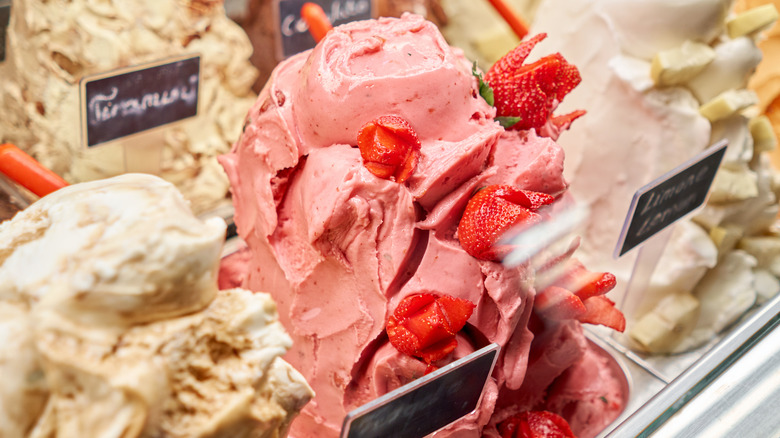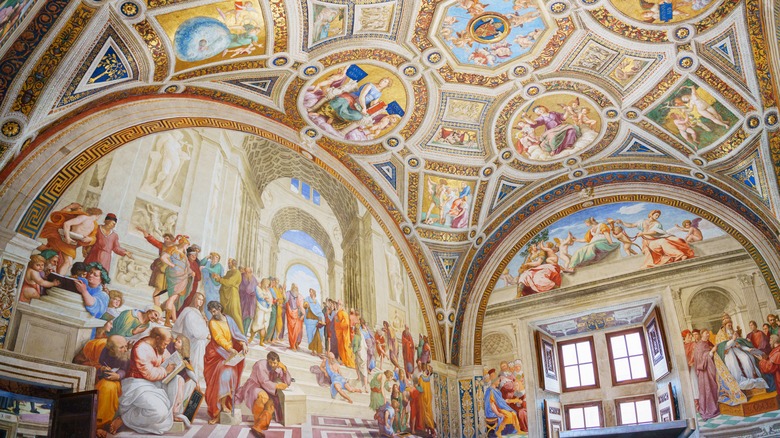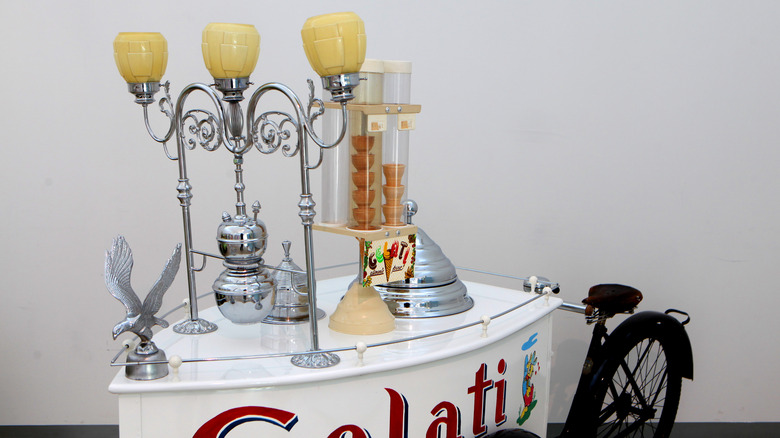How The Italian Renaissance Brought Us Gelato
Sweet icy treats come in many forms for those who like their daily sugar intake served cold. There is ice cream, sorbets and sherbets, popsicles, granitas, the very American ice cream sandwich, and, of course, the ever-popular Italian gelato. What sets gelato apart from ice cream is the fat content — the real Italian deal contains less fat than ice cream and is also churned at a lower speed, which results in a thicker, denser texture, as noted by Slice of Tuscany.
However, before gelato there was Italian ice, and Romans kicked off the tradition by enjoying ice sourced from volcanoes drizzled with honey, as reported by La Macelleria. It wasn't until the time of the Italian Renaissance, during the 15th and 16th centuries, that gelato came into existence. There were several key players that led gelato to its famed ubiquity in Italy today, from Catherine de' Medici to an architect and a simple restaurateur. Here is how the Italian Renaissance brought us gelato.
The birth of gelato during the Italian Renaissance
According to Australian-Japanese food writer Emiko Davies, Catherine de' Medici held a competition for chefs to create a stunning and unique dish. Despite the many extravagant entries the winning entry was the simple creation of a poultry seller named Ruggieri. His dolcetto gelato came out on top, catapulting the farmer up societal ranks as well when Catherine then brought him and his dessert to Paris. Medici wanted to dazzle her noble French counterparts with gelato once she married into the royal family by way of Henry II. As legend has it, Ruggieri would later leave the court and Medici with his recipe, preferring the simple life.
However, other outlets tell a different version of this story. According to Italy Magazine, Cosimo Ruggieri was actually an alchemist who created the fior di latte gelato flavor, and later an architect by the name of Bernardo Buontalenti created the gelato alla crema d'uovo using egg cream. Either way, soon an enterprising Italian named Francesco Procopio Cutò opened a cafe in Paris in 1868 and put gelato at the forefront of public consciousness. One doctor from Naples, Filippo Baldini, even wrote a public declaration claiming that gelato was good for the body and spirit.
Gelato has a dedicated museum in Bologna
In the first half of the 20th century, technology made selling and consuming gelato easier than ever, with lots of room for innovation, as explained by the Gelato Museum. However, in the second half of the century, artisanal gelato production started to diminish due as industrial ice cream pushed its way into Italian markets. According to the Gelato Museum, artisanal gelato makers were practically on the verge of disappearing entirely during this time. Thankfully, today the gelato market as a whole is poised to grow impressively, as observed by Digital Journal.
So popular is gelato that in 2012 the Carpigiani Gelato Museum opened in Anzola dell'Emilia, a town near Bologna, Reuters reports. The space, which was founded by the Carpigiani company, dedicates 1,000 square meters to the history of the beloved dessert. The Carpigiani company, of course, is named for Italian technician and designer Bruto Carpigiani, the creator of a safer and more efficient gelato machine, per Fondazione Bruto e Poerio Carpigiani. The gelato innovation hasn't stopped either – one restaurant in Rome is even using gelato as an ingredient for dinner rather than just serving it as a dessert.


